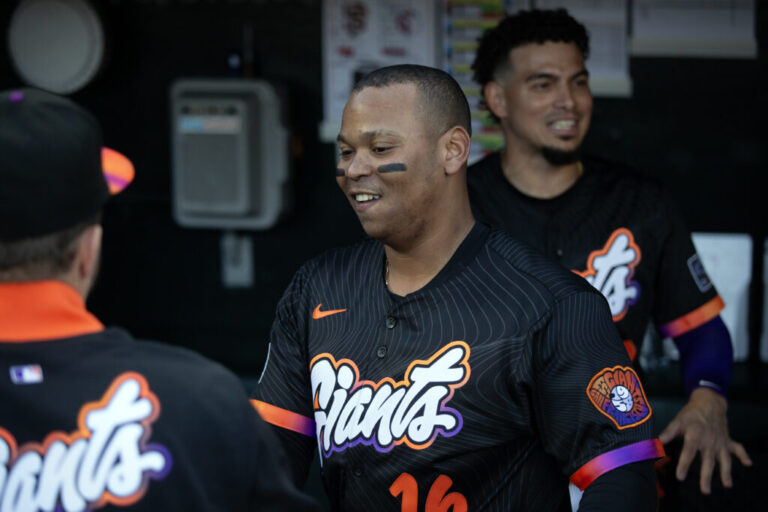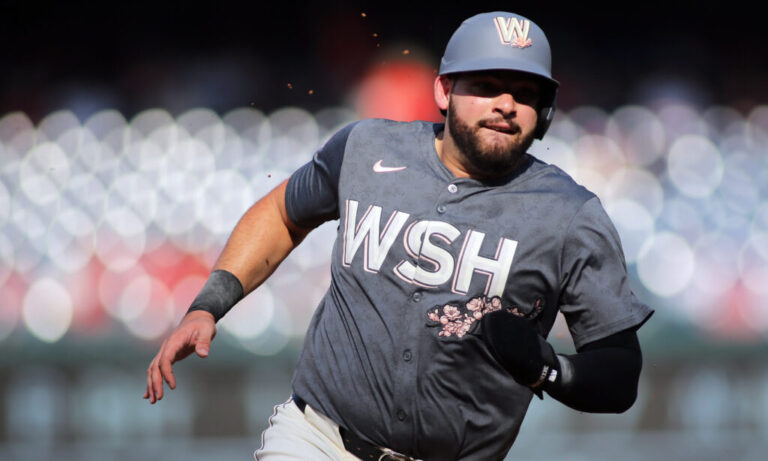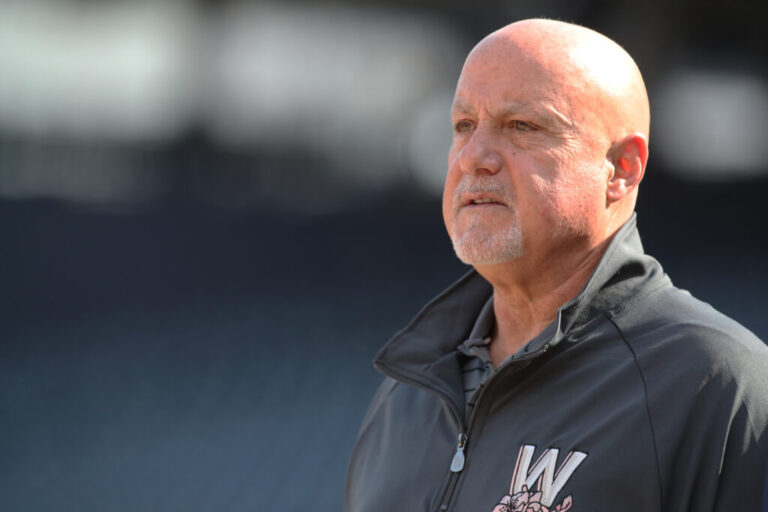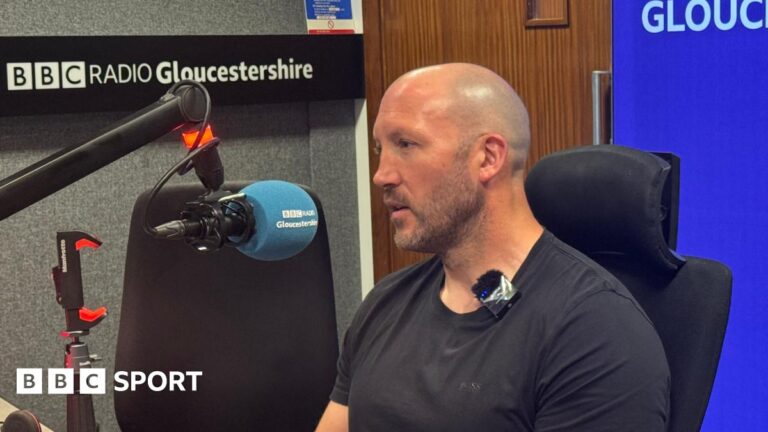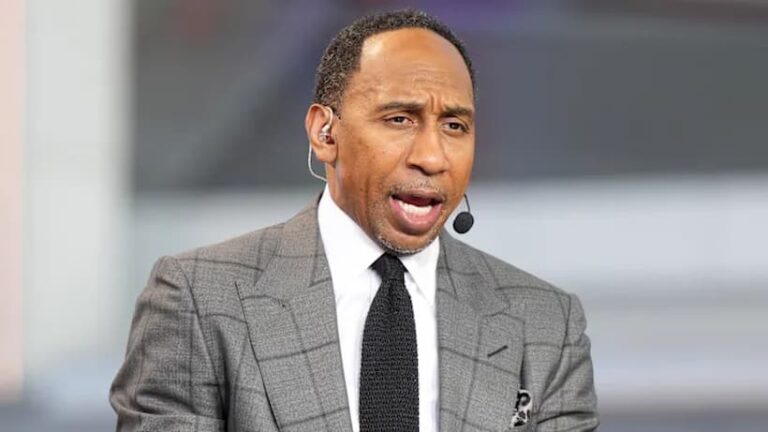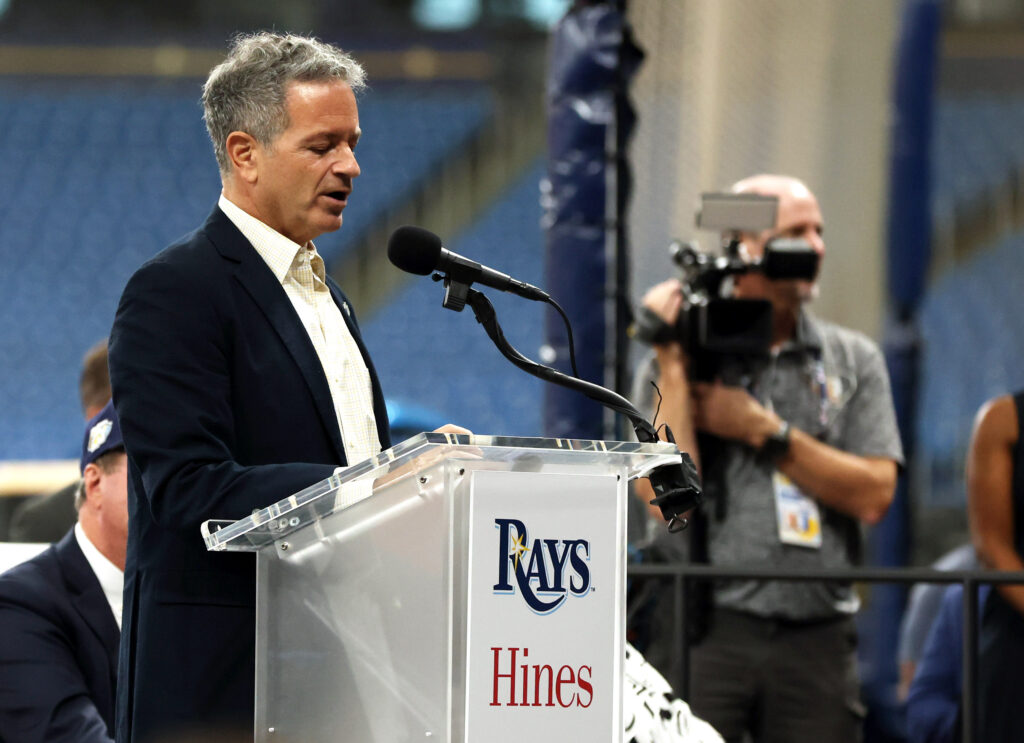
12:18pm: The Rays have issued the following statement acknowledging the negotiations but declined to provide further comment or details:
“The Tampa Bay Rays announced that the team has recently commenced exclusive discussions with a group led by Patrick Zalupski, Bill Cosgrove, Ken Babby and prominent Tampa Bay investors concerning a possible sale of the team. Neither the Rays nor the group will have further comment during the discussions.”
11:40am: Rays owner Stuart Sternberg is in “advanced talks” with Jacksonville real estate developer Patrick Zalupski about a sale of the franchise for approximately $1.7 billion, per a report from Scott Soshnick and Kurt Badenhausen of Sportico. Zalupski has signed a letter of intent to purchase the club, the Sportico pair adds, though that does not signify that a deal will definitely cross the line. Still, Joel Sherman off the New York Post hears similarly, reporting that talks between the two parties are serious and that the Zalupski-led group is the only buyer with which the Rays are negotiating at the moment.
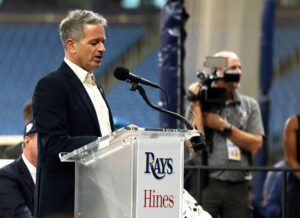

Sternberg purchased the Rays franchise for $200MM back in 2004 and has spent years unsuccessfully attempting to secure public funding for a new stadium in or around the St. Petersburg/Tampa area. A deal finally looked to be well on its way toward completion a year ago, but Hurricane Milton wrought catastrophic damage on Tropicana Field, derailing those plans and pushing the Rays to temporarily relocate to Tampa’s George M. Steinbrenner Field — home to the Yankees’ Florida State League affiliate and their annual home park during spring training.
Zalupski is the CEO of Dream Finders Homes, a publicly traded, Jacksonville-based developer that has built more than 31,000 homes across ten states. Forbes estimates his net worth at $1.4 billion, while his company’s valuation rests at $3.4 billion.
Per Sportico, Zalupski is the lead investor in a larger group that counts Ken Babby and Bill Cosgrove among several potential minority stakeholders. The former holds majority stakes in the Marlins’ Triple-A affiliate and the Guardians’ Double-A club and is the son of prominent NBA agent (and former Phoenix Suns president of basketball operations) Lon Babby. The latter is the CEO of Union Home Mortgage Group. Other investors are involved and figure to come to light if the sale process indeed continues toward completion.
The potential sale of the team comes just months after spring reports suggesting that commissioner Rob Manfred and several other owners throughout MLB were beginning to pressure Sternberg to orchestrate a sale of the club. At the time, Sternberg was said to at the very least be courting additional minority owners to invest in the team — all while groups of local business leaders were in the early stages of putting together groups to potentially pursue a majority stake in the club. None of Zalupski, Cosgrove or Babby were listed as prospective buyers at the time, though it’s fair to presume they were involved in and/or spearheading some of those early efforts.
Sternberg has owned the Rays for 20 years, and the team’s stadium has been at the forefront of any and all narratives surrounding the organization since that time. With the A’s in the process of moving to a new home on the Las Vegas strip, Tropicana Field was considered perhaps the most dilapidated facility in Major League Baseball — even before last year’s hurricane damage, which saw the entire roof ripped off “the Trop,” leaving the Rays without a home stadium for a few months. The move to Steinbrenner Field currently only runs through the 2025 season.
Throughout his time owning the Rays, Sternberg has explored a variety of options ranging from constructing a new field on the existing site of Tropicana Field, to building a new stadium in downtown Ybor City — even to a convoluted split arrangement that would see the Rays host half their home games in Florida and half in Montreal. Beyond the dated nature of Tropicana Field, the location of the park has been a frequent source of consternation for fans; the stadium is not in Tampa proper but rather on the nearby — but difficult to access — Pinellas County peninsula. That’s one of many prominent factors in the Rays’ longstanding attendance issues.
With the Rays residing in a small media market and perennially unable to ramp up attendance, payroll has been a frequent issue. Tampa Bay is among the bottom teams in the league each year in terms of player payroll, despite receiving hefty annual sums from the league’s revenue-sharing system. The constant payroll restrictions from Sternberg have led to the Rays becoming notorious for developing star players then trading them off to other clubs for packages of younger, more controllable — and, crucially — cheaper talent. That’s created something of a self-fulfilling prophecy, as it’s hard to retain fans and bolster attendance when local residents’ favorite players are constantly being shipped out for young talent that is generally unknown to the majority of the fan base.
Prior to Hurricane Milton, the Rays had a tentative agreement for the construction of a $1.3 billion, 30,000-seat facility in the Gas Plant district near the existing Tropicana Field site. Construction of that park was part of a larger $6.5 billion redevelopment project in the area. Mass hurricane damage in the area slowed critical votes on funding and raised unanswerable difficult to unanswerable questions about the cost of repairing Tropicana Field, the viability of potential interim homes for the Rays and various other logistical issues. Sternberg announced back in March that his team was no longer pursuing the Gas Plant project — an outcome that had grown to seem increasingly inevitable as frustrations between the team, city and Pinellas County all played out in ugly, public fashion.
The lost 2025 season at Tropicana Field also pushed the Rays’ existing lease at the stadium back a year; it had been slated to end after the 2027 season but is now slated to conclude after the 2028 campaign. Of course, it’s still not wholly clear that Tropicana Field will be repaired in time for the Rays to play their 2026 home games there. Colleen Wright of the Tampa Bay Times recently reported that the city of St. Petersburg approved another $5.3MM in funding, bringing the total to $38.5MM of the estimated $57MM needed to repair Tropicana Field’s damages. Whether the remainder of that funding will be secured and whether the requisite work can be completed in a timely manner remain unclear.
If today’s reported sale goes through, there will still be more questions than answers. The hope is that Tropicana Field will be ready at or very near the beginning of the 2026 regular season. Even if that timeline stays on track — in terms of securing remaining funding, completing the work and the wild card of avoiding any further weather damage during hurricane season — it still wouldn’t be clear where the team’s home games would take place following the 2028 campaign.
Manfred has said his hope is to keep two teams in Florida, though even that opens various possibilities. The Rays have explored various neighborhoods, and Hall of Famer Barry Larkin referenced the Rays’ ongoing stadium concerns when discussing his efforts leading a group that hopes to bring Major League Baseball to Orlando. Nashville, Salt Lake City and Portland have made their desire to bring MLB to their cities known as well. All of those locations will be speculatively tied to the Rays as the current ownership situation plays out.
